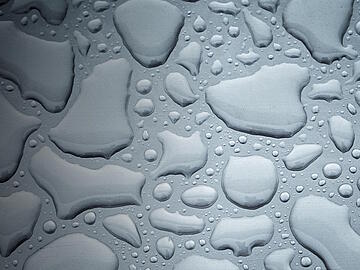
Composition Analysis of an Electrolytic Etching Solution by HR ICP-OES Application Note · PlasmaQuant 9100 Elite
Challenge
- Trace impurity control and quantification of matrix elements in matrix-rich etching solutions from a single measurement run.
Solution
- HR ICP-OES with industryleading high-resolution optical system and superior sensitivity and matrix tolerance to achieve trace element analysis in the heavy matrix of electrolytic etching solutions.
Introduction
Surface modifications of prefabricated metal parts are a crucial step in the manufacturing and construction process of machinery in industries such as automotive, aerospace, and mechanical engineering. In this regard, etching solutions are used for surface cleaning of ferrous metals copper, aluminum, or alloys (e.g., brass) to remove metallic (burring) or surfactant residues and to alter surface properties such as roughness or the ability to be coated or bonded to other materials (e.g., plating).
Etching solutions mainly contain acids such as hydrochloric acid, sulfuric acid, hydrofluoric acid, nitric acid, and phosphoric acid in different mixtures. Often the etching process is assisted by the application of electrical current to either speed up the cleaning/etching process or to perform electroplating processes. Electroplating is used to apply functional materials to the base metals in order to achieve smoothing of the surface, color effects (e.g., gloss), or to enhance physical properties such as abrasion resistance.
The efficiency of these processes highly depends on the properties of the etching/ plating solutions. In electrolytic processes, impurities of redox active metals hamper a successful plating process. Therefore, frequent quality control of the employed solutions is a key criterion in QC labs of the electroplating industry.
Analytical challenges for QC control of etching solutions comprise the complexity of the matrix consisting of varying ratios of concentrated acids as well as the presence of matrix elements in varying concentrations.
Furthermore, leached components of the base metals and their additives (chromium, nickel, cobalt, vanadium, molybdenum, etc.) result in complex spectra due to their wealth of emission lines and therefore give rise to the occurrence of spectral interferences. Thus, analyzing electrolytic etching solutions with high precision regarding trace impurities of Ag, Al, B, Ba, Ca, Cd, Co, Cr, Cu, Li, Mg, Mo, Pb, Sn, Sr, Ti, V and matrix components Fe, K, Mn, Na, Ni, P, Si, and Zn requires a highly robust plasma to handle matrix-rich samples, high spectral resolution to resolve severe spectral interferences, high sensitivity to achieve low specification limits for impurities, and a wide working range to quantify trace impurities and matrix components from the same measurement run.
Within this study, a commercially available etching solution used by the aerospace industry was investigated by using a high-resolution ARRAY ICP-OES, the PlasmaQuant 9100 Elite, equipped with HF sample introduction kit. The PlasmaQuant 9100 Elite addresses the analytical challenges of the analysis of etching solutions by its plasma robustness (HF Generator), exceptional spectral resolution, and industry-leading sensitivity (HR Optics) and wide working range (DualView Plus) features. Furthermore, ease of use is achieved by its intelligent sampling design, including the V-Shuttle Torch and powerful data evaluation algorithms such as the automatic baseline correction ABC.
The methodology applied here results in limits of quantification of less 1 μg/L with respect to the electrolytic etching solution for thirteen out of seventeen trace elements, as the most sensitive emission lines are interference-free on the PlasmaQuant 9100 Elite. In addition, a spike recovery test for 50 μg/L of an EPA method 200.7 calibration standard was conducted for further proof of method robustness.
Download the complete Application Note
Contact us
The newsletter of Analytik Jena frequently keeps you posted about:
- News
- Trends and developments
- Events
